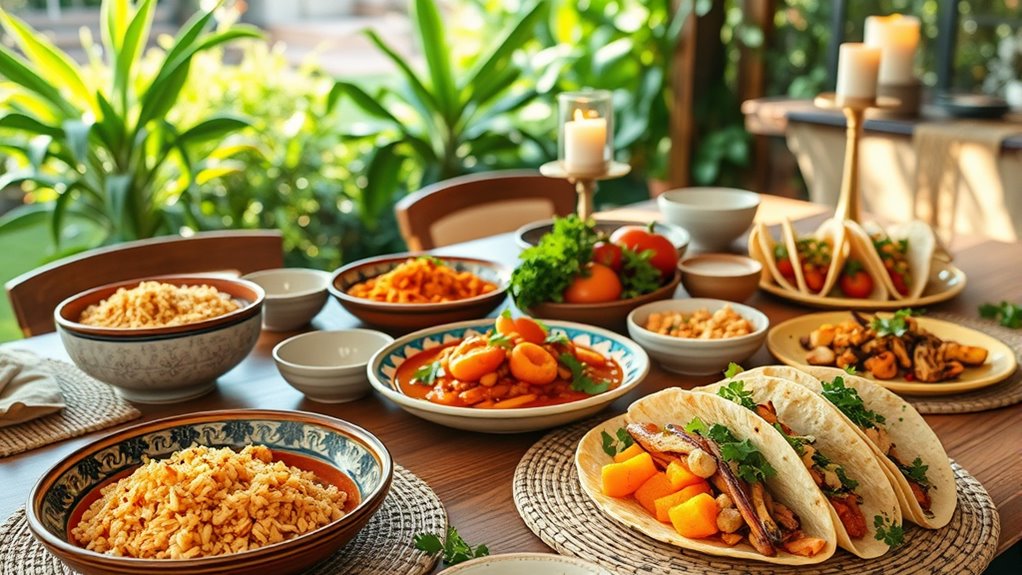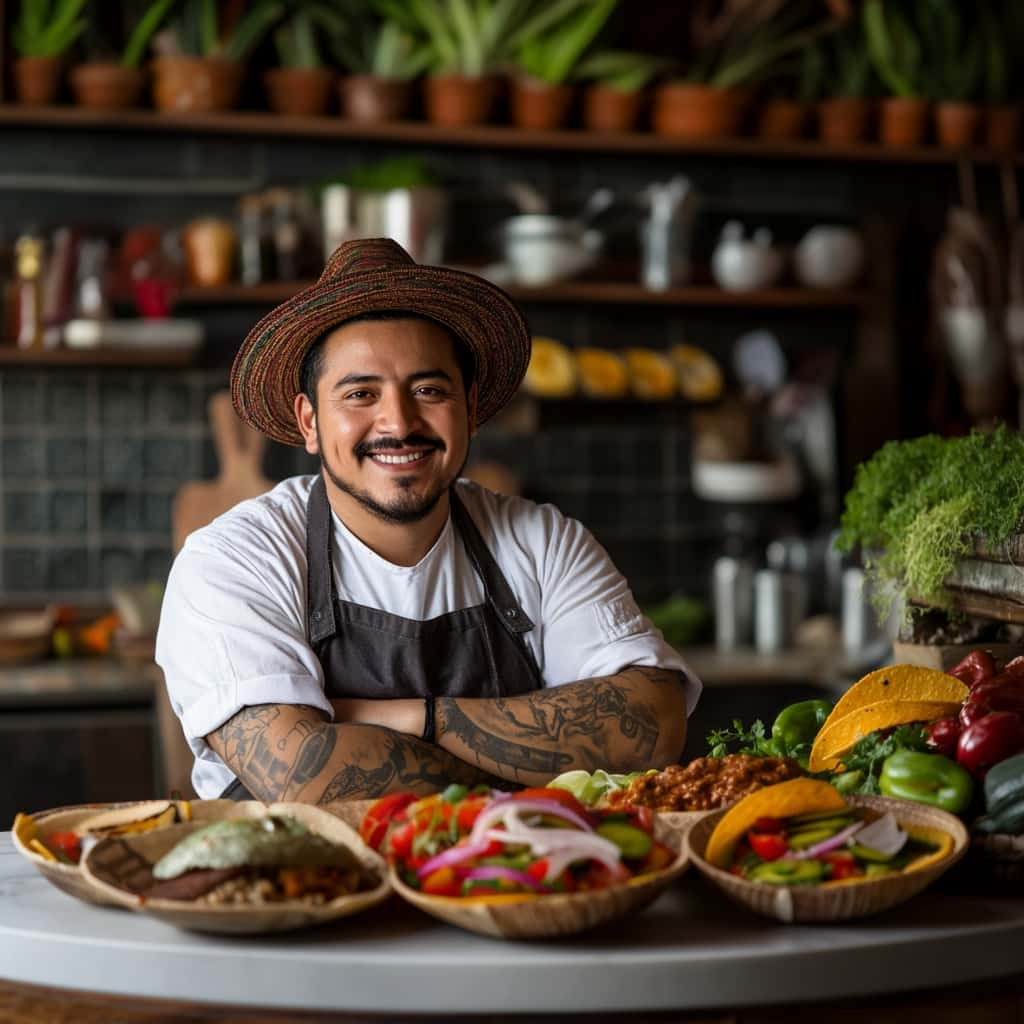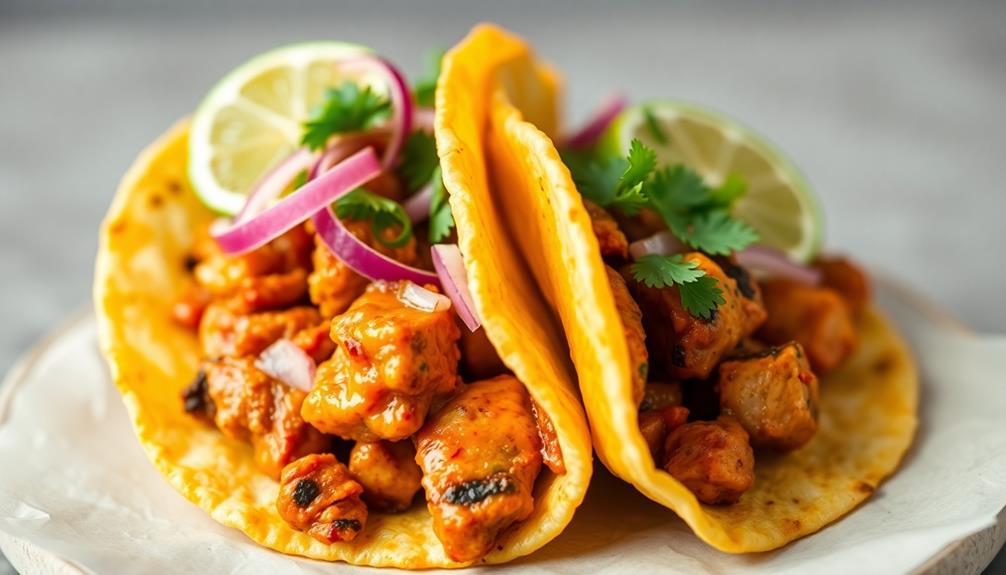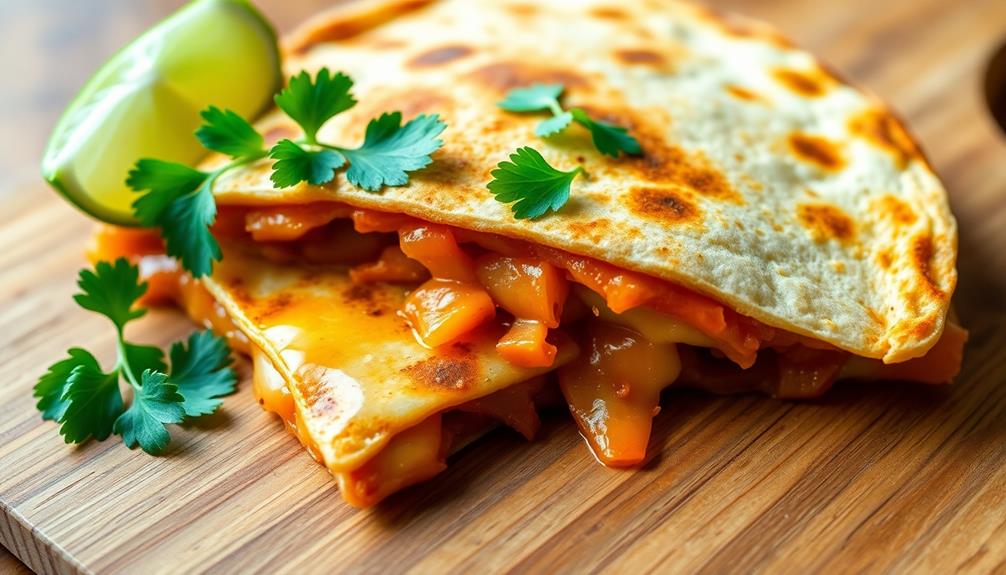Transform your Thanksgiving into a fusion feast by incorporating international ingredients and flavors into your meal. Experiment with Asian spices, tropical fruits, or Mediterranean herbs to add exciting twists to traditional dishes. Balancing authenticity with creativity allows you to honor diverse culinary traditions while creating memorable flavors. By blending global influences, you turn a classic celebration into an exploration of cultural diversity. Keep exploring to discover inspiring ideas for making your holiday truly international and unforgettable.
Key Takeaways
- Incorporate global spices and ingredients like lemongrass, five-spice, or tropical fruits to add international flavors to traditional dishes.
- Combine culinary techniques from different cultures, such as Mediterranean herbs with Asian-inspired starters, for creative fusion recipes.
- Create a diverse menu featuring international-inspired appetizers, mains, and desserts that celebrate global culinary traditions.
- Balance authenticity and innovation by respecting traditional flavors while thoughtfully blending new ingredients to enhance dishes.
- Foster cultural exchange by sharing stories and traditions behind each international element, enriching the Thanksgiving experience.

Have you ever wondered how different cuisines can come together to create something truly extraordinary? “Fusion Feast” explores the vibrant world of culinary blending, where chefs combine flavors, techniques, and ingredients from diverse cultures to craft innovative dishes. When you think about giving Thanksgiving an international twist, embracing culinary diversity and cultural influences becomes essential. This approach transforms a traditional meal into a global celebration, inviting new flavors and ideas to your table.
Imagine incorporating Asian spices like five-spice or lemongrass into your stuffing, infusing it with fragrant, unexpected notes. You could replace classic cranberry sauce with a tangy mango salsa, adding a tropical flair that complements the savory turkey. These choices reflect cultural influences from around the world, demonstrating how culinary diversity can elevate familiar dishes. By blending ingredients and techniques from different regions, you create a more dynamic and memorable feast that celebrates global tastes.
Cultural influences act as the foundation for this culinary innovation. For example, a spicy Mexican-style pumpkin soup can serve as a starter, blending traditional fall flavors with bold, vibrant spices. Or, you might serve a Mediterranean-inspired vegetable medley seasoned with herbs like oregano and basil, highlighting the Mediterranean’s emphasis on fresh, colorful produce. These influences not only diversify your menu but also encourage your guests to experience new flavors while still enjoying the comfort of familiar holiday traditions.
The key lies in balancing these influences without overwhelming the senses. You want to introduce new tastes, but also respect the authenticity of each cuisine. For instance, using soy sauce in a gravy or incorporating coconut milk into mashed potatoes can add a subtle layer of global flavor without overpowering the dish. This careful blending showcases your creativity and appreciation for culinary diversity, making the meal both innovative and respectful of its origins.
Incorporating international elements into Thanksgiving isn’t just about adding new ingredients; it’s about celebrating the richness of different cultures through food. Each dish becomes a story of cultural exchange, a way to connect your family and friends to a broader world. As you experiment with flavors from Asia, Africa, Europe, or Latin America, you’re creating a festive atmosphere that honors diversity and encourages curiosity. Ultimately, this fusion approach transforms your holiday meal into a vibrant tapestry of global culinary influences, making your Thanksgiving not just a gathering, but an exploration of the world’s rich culinary heritage.
Frequently Asked Questions
How Can I Incorporate International Flavors Into Traditional Thanksgiving Dishes?
You can incorporate international flavors into traditional Thanksgiving dishes by trying global ingredient swaps, like using coconut milk in mashed potatoes or spices like turmeric and cumin in stuffing. Cultural fusion tips also include adding chopped herbs from different cuisines or topping dishes with a tangy chutney or salsa. These small changes create a vibrant, multicultural feast that celebrates both tradition and global flavors, making your Thanksgiving truly unique.
What Are Some Popular Global Substitutions for Turkey?
Ever wondered what could replace turkey and still impress? You can try vegetarian mains like roasted cauliflower steaks or lentil loaves, which are hearty and flavorful. For gluten-free options, consider stuffed squash or grilled fish, offering a delicious twist. These global substitutions will surprise your guests and add international flair to your feast, making your Thanksgiving memorable with exciting, inclusive dishes that suit everyone’s preferences.
How Do I Adapt International Spices for a Thanksgiving Menu?
To adapt international spices for your Thanksgiving menu, focus on spice blending to create unique flavors. Start by balancing bold spices like cumin, coriander, or turmeric with milder herbs such as thyme or rosemary. Use small amounts first, then taste and adjust for harmony. This approach guarantees your dishes remain flavorful without overwhelming traditional favorites, giving your feast an exciting international twist while keeping the essence of Thanksgiving.
What Drinks Pair Well With Fusion-Themed Thanksgiving Meals?
You can pair your fusion-themed Thanksgiving meals with craft cocktail ideas like a spiced mango margarita or a ginger-lime mojito to complement global flavors. For non-alcoholic options, try infused sparkling water with exotic fruits or a spiced apple cider. These drinks balance the diverse spices and ingredients, enhancing your international-inspired feast while keeping everyone refreshed and excited to try new flavor combinations.
Are There Cultural Considerations to Respect When Mixing Cuisines?
Yes, mixing cuisines requires cultural sensitivity and awareness of dietary restrictions. You should respect traditions by researching the cultural significance of ingredients and dishes, avoiding stereotypes or misappropriation. Consider dietary restrictions like allergies, religious restrictions, or vegan preferences. By being mindful and respectful, you create an inclusive experience that honors diverse cultures while celebrating Thanksgiving’s spirit of gratitude and togetherness.
Conclusion
So, next time you sit down for Thanksgiving, remember: your plate isn’t just American. With a few international twists, you’re celebrating a feast that’s truly global. Who knew that blending flavors from around the world could make your holiday more meaningful—and, yes, more confusing? But hey, isn’t that the point? Embrace the chaos, enjoy the fusion, and maybe, just maybe, start a new tradition that’s as diverse as your taste buds.










